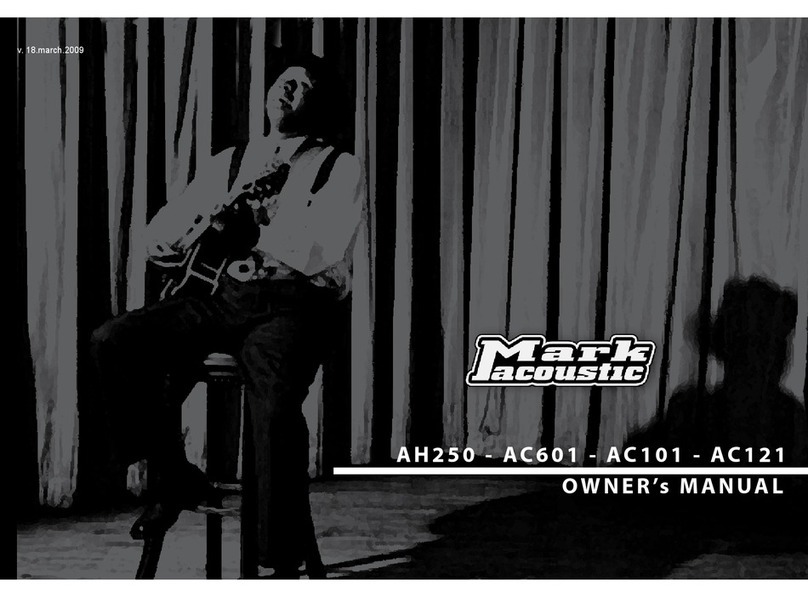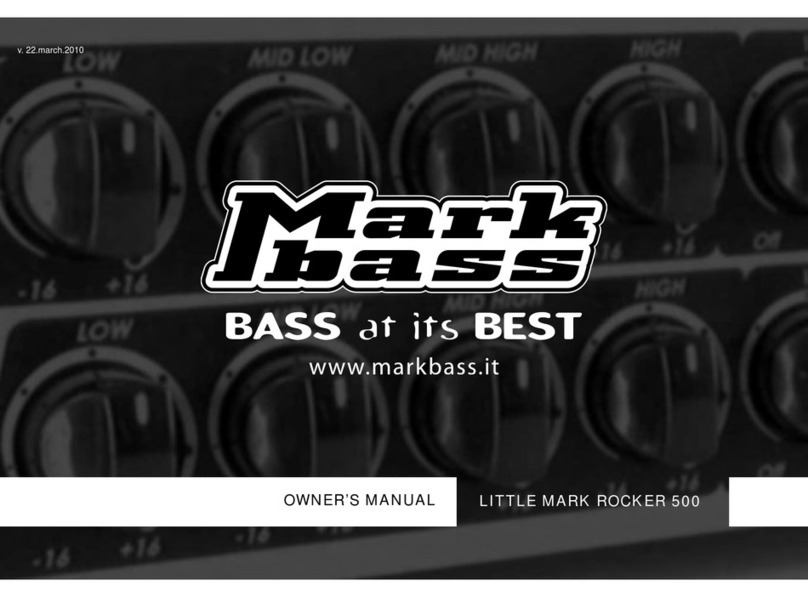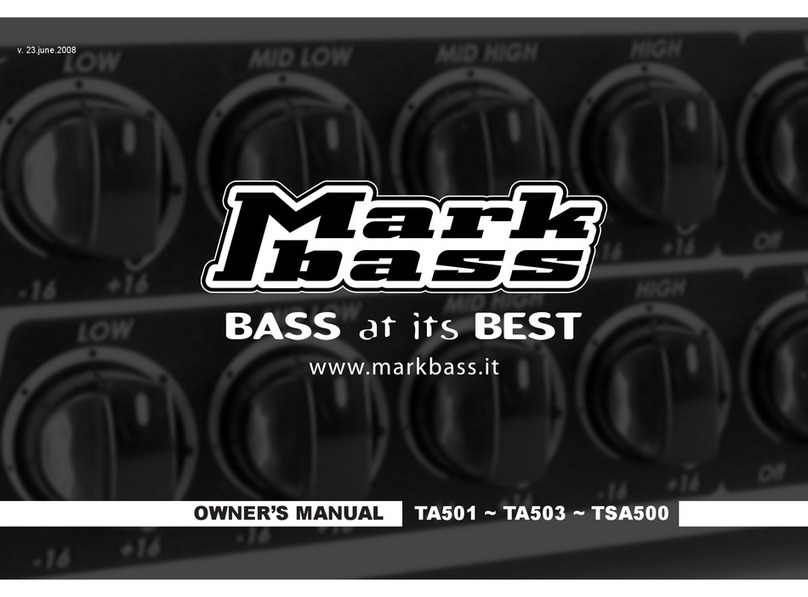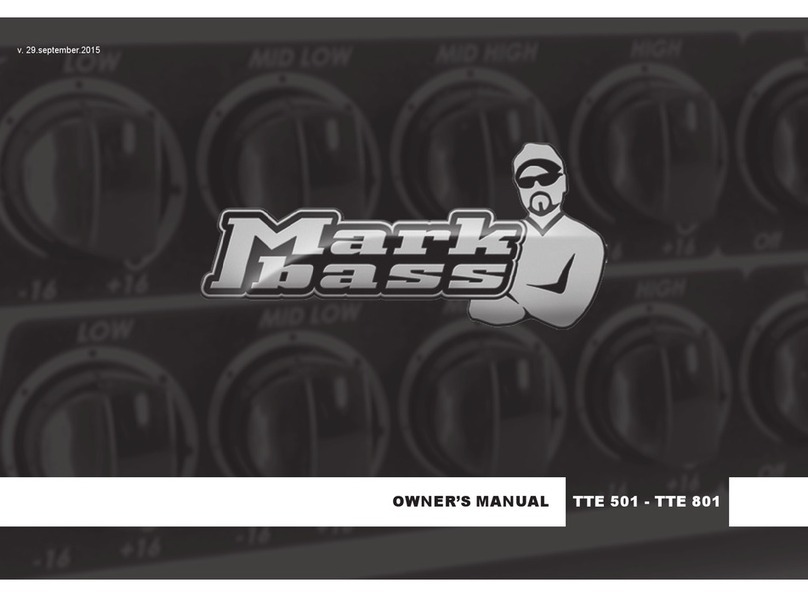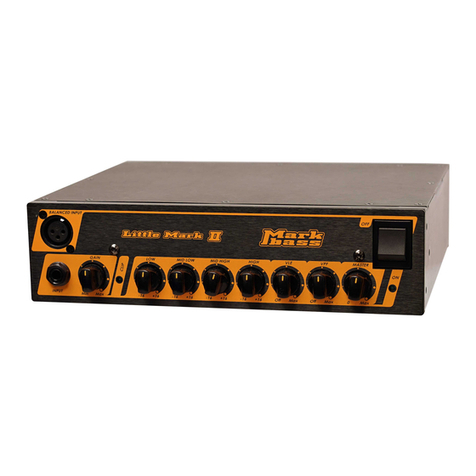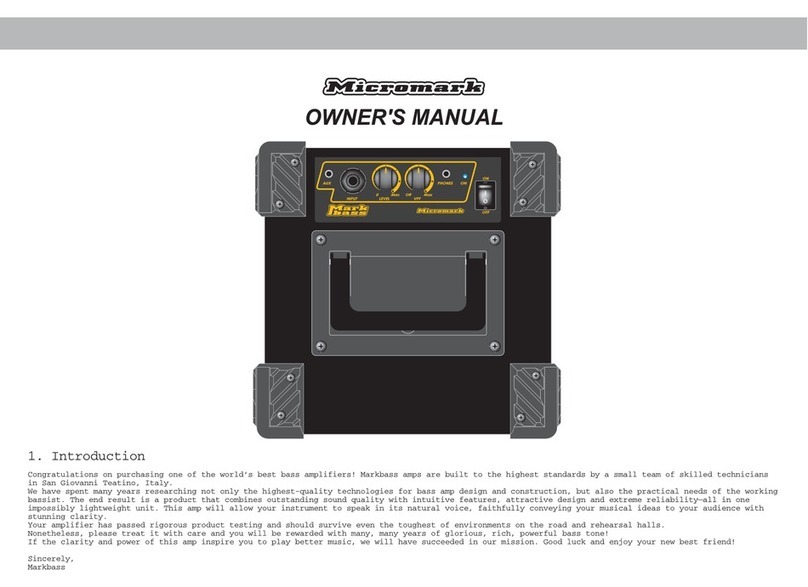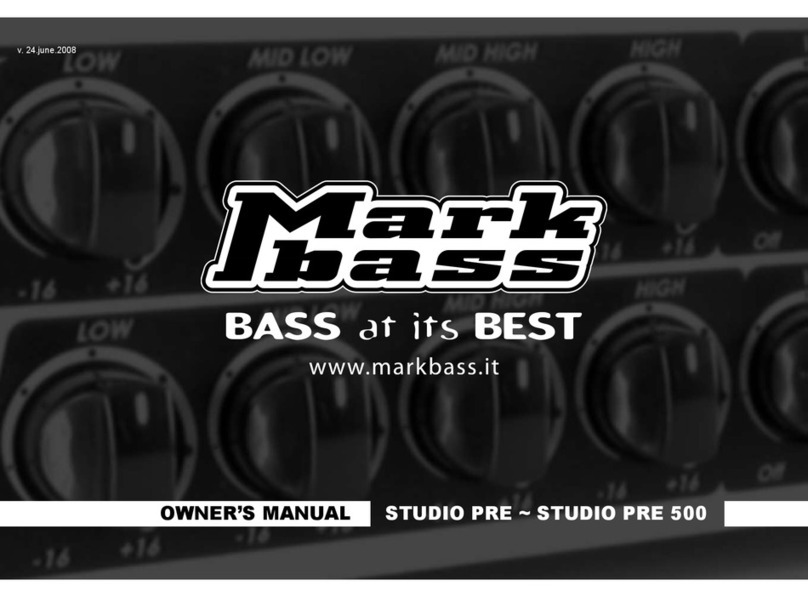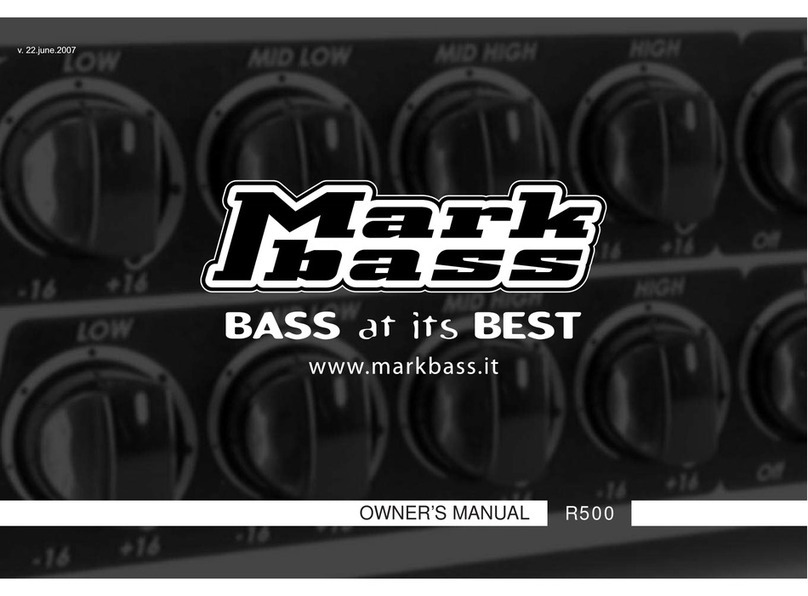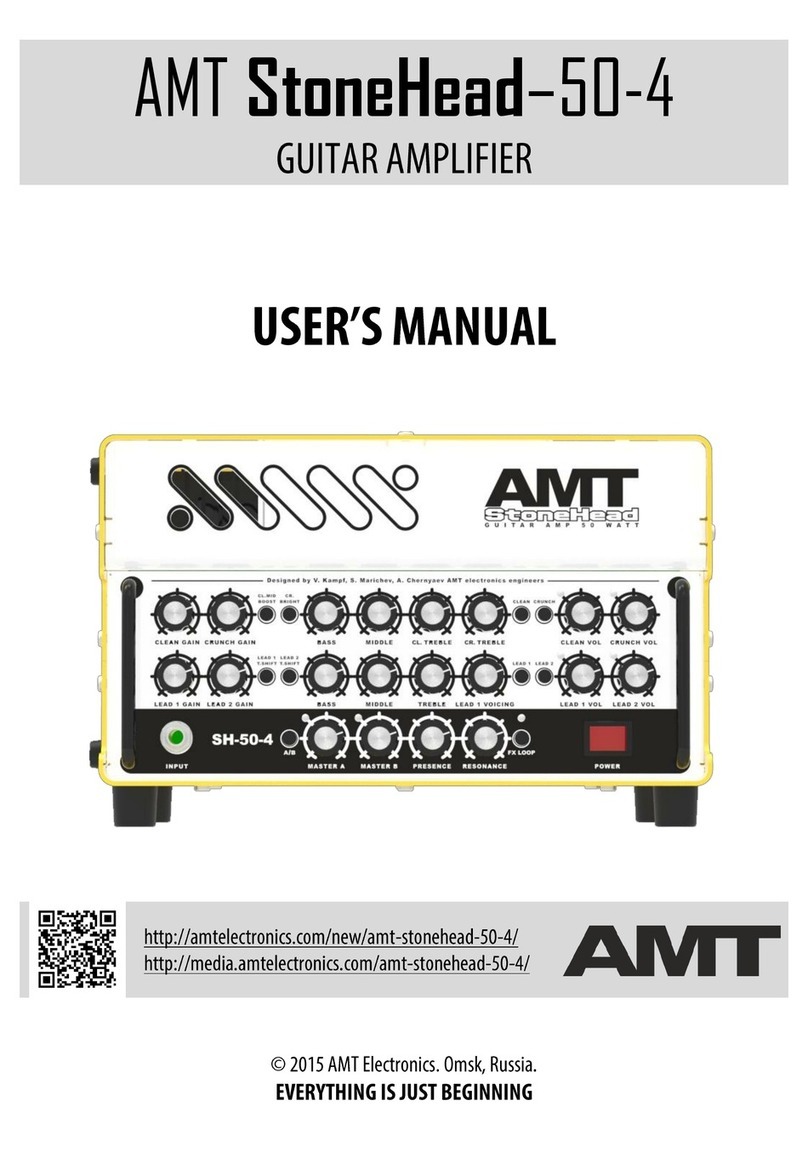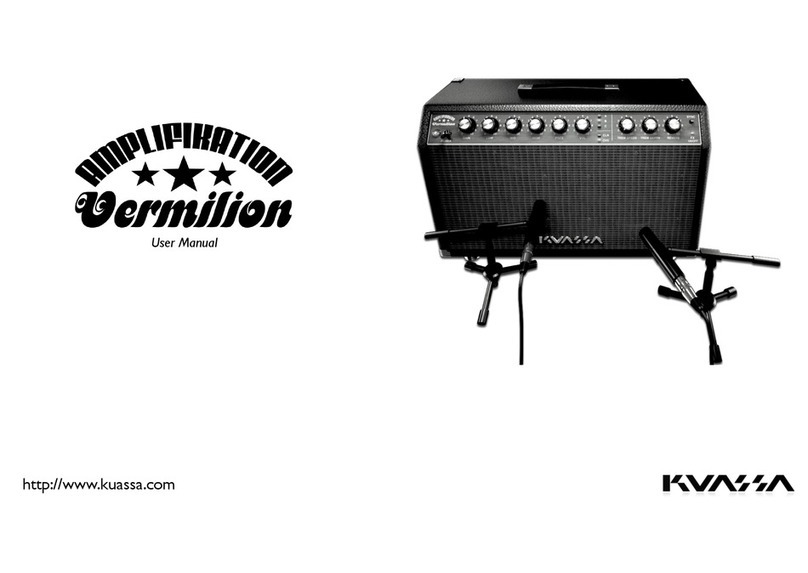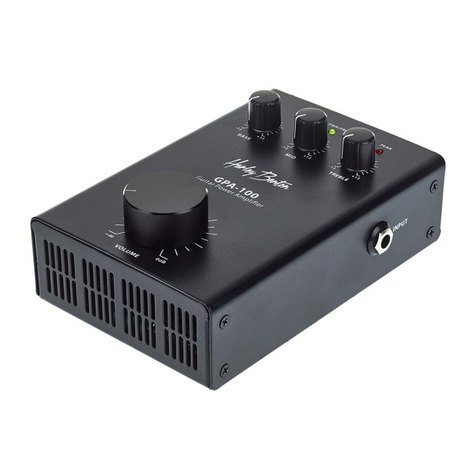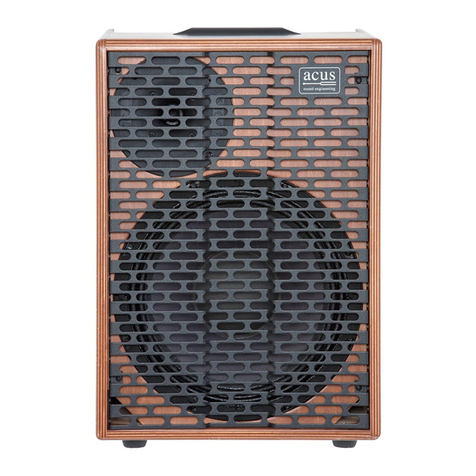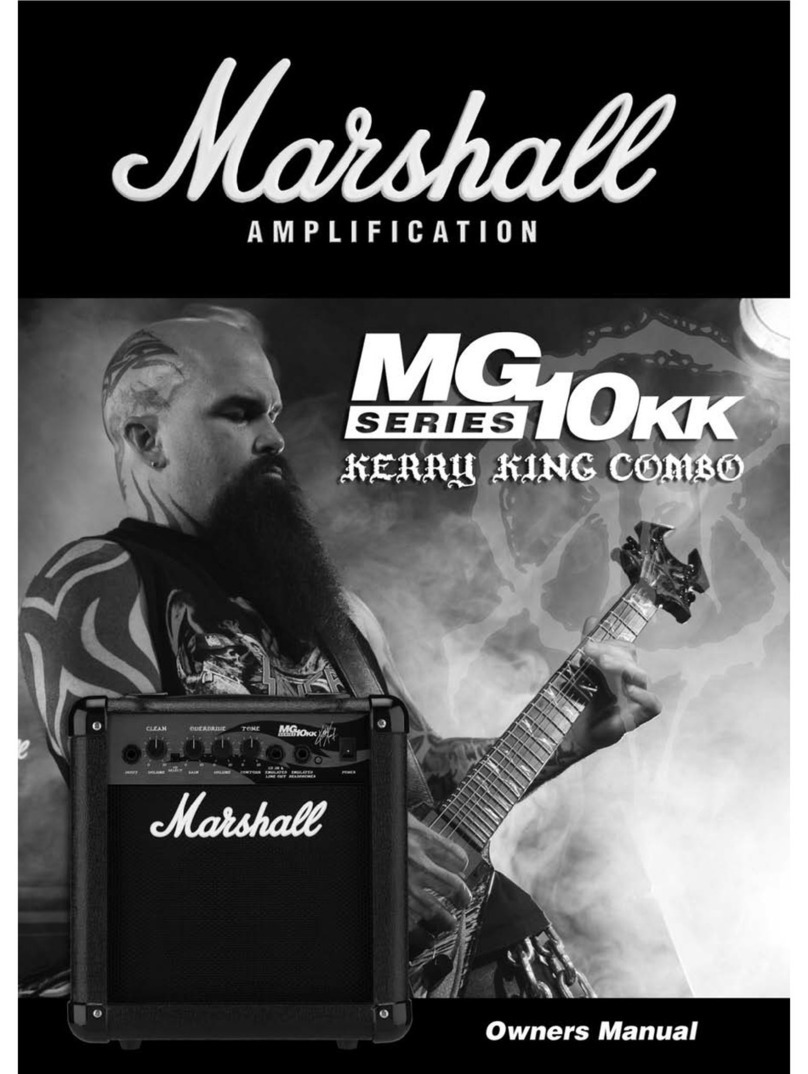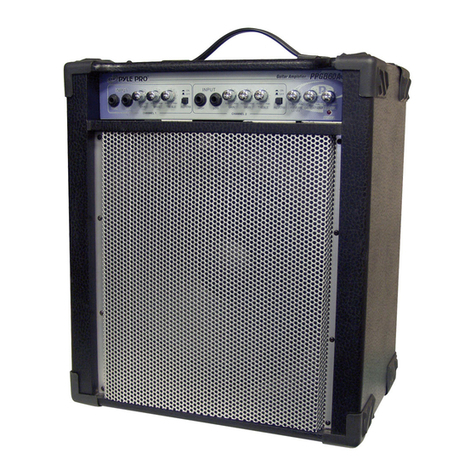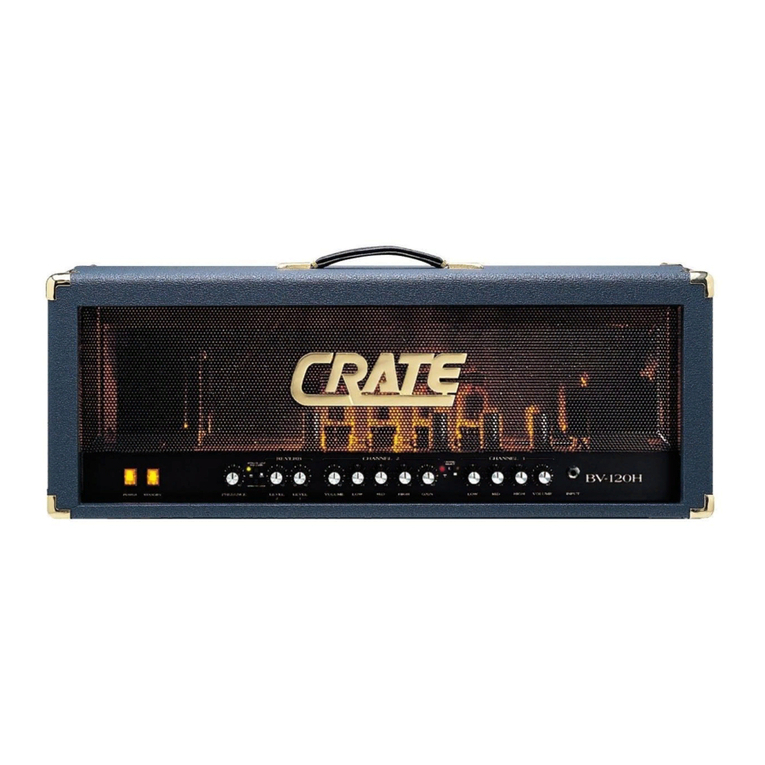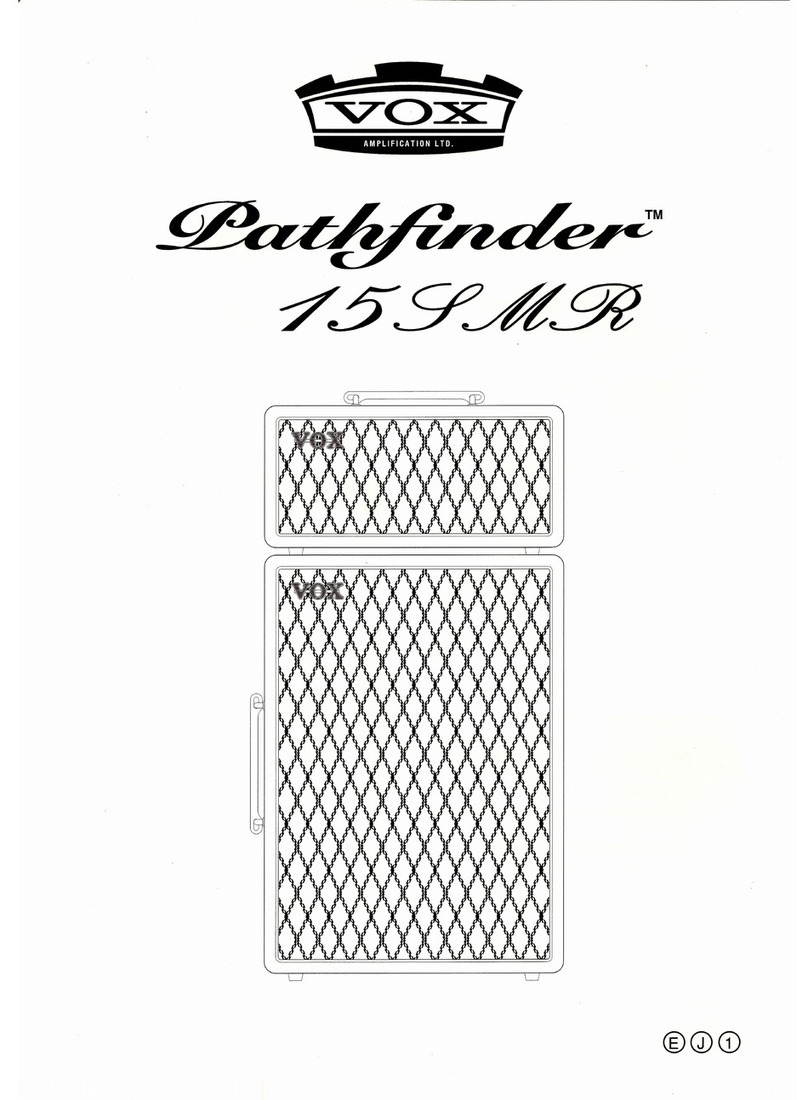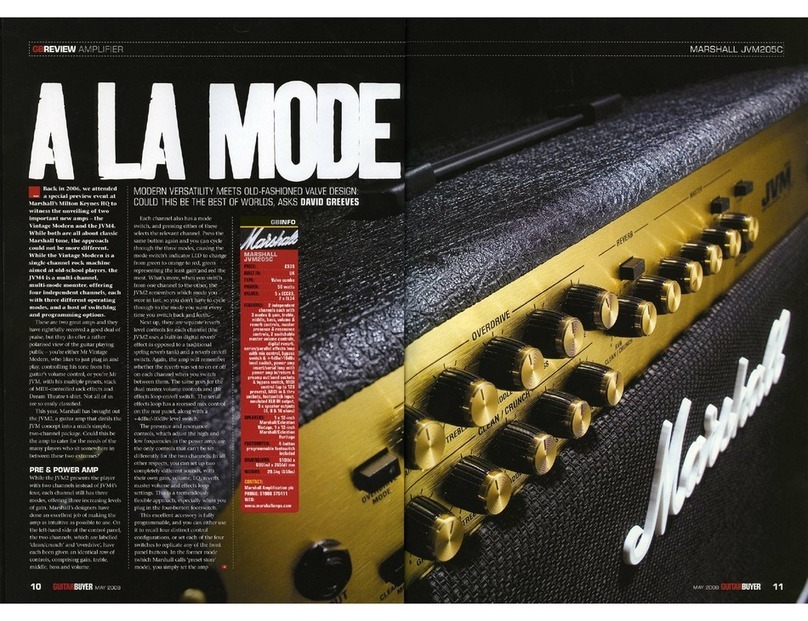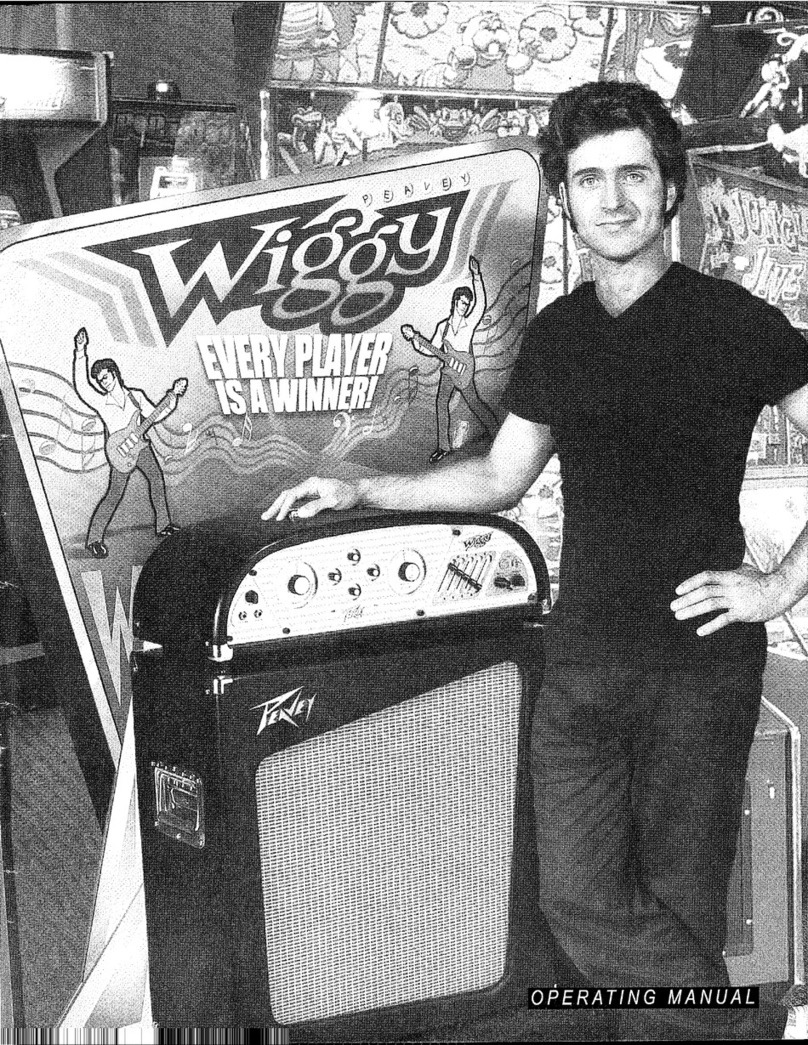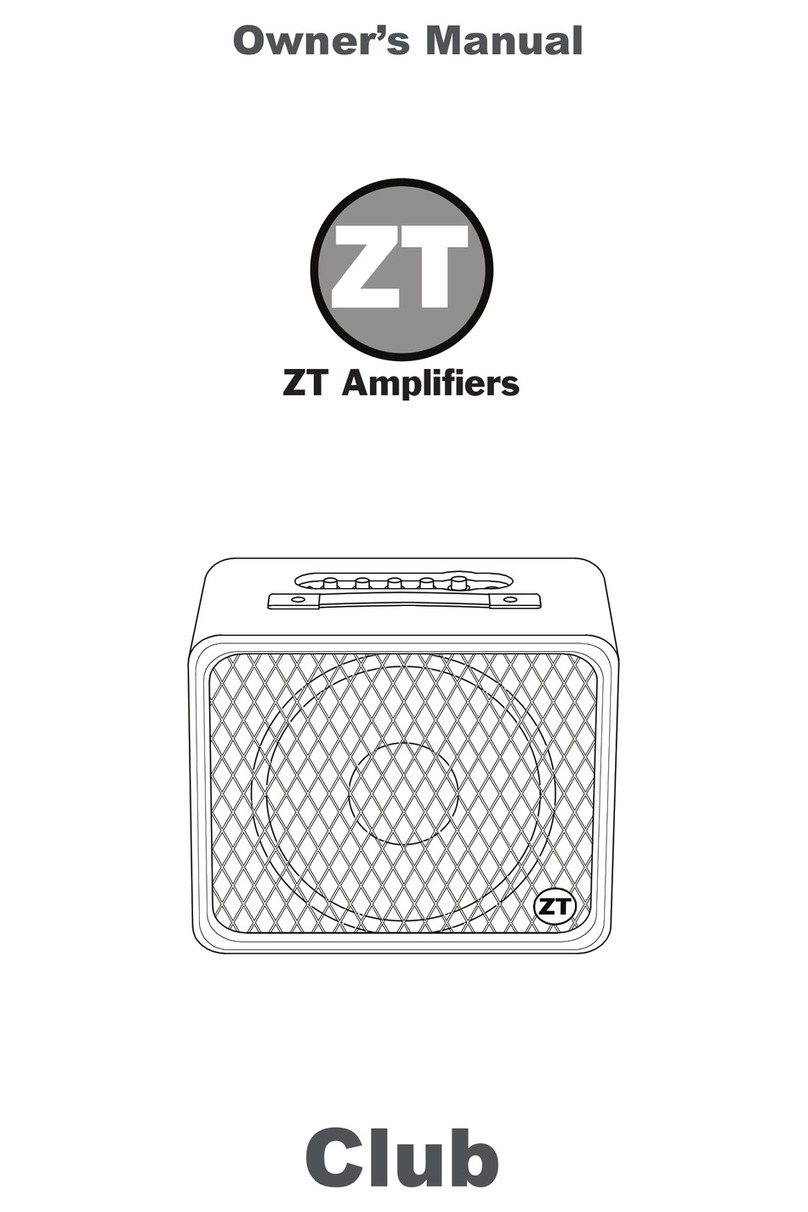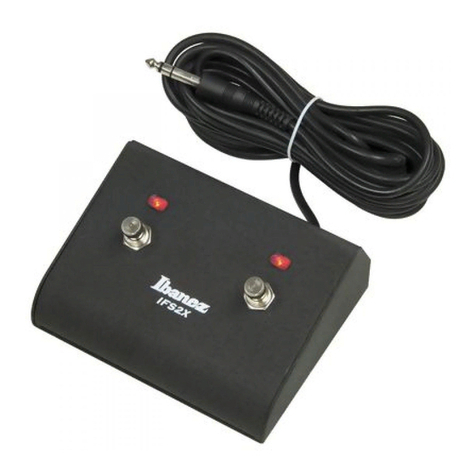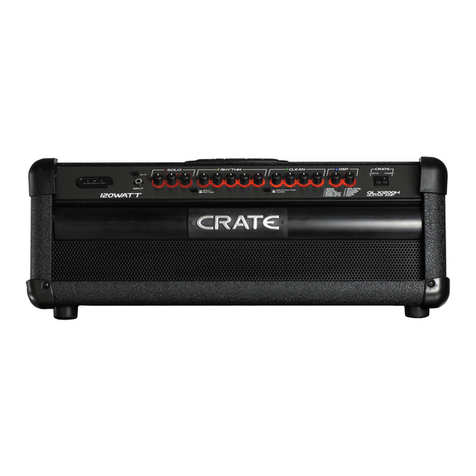Build Quality 19
Excellent throughout. Everything is
well designed and put together to
ensure quality of sound, durability
and rattle-free operation.
Sound 20
Great sound and really powerful
EQ. The VLE and VPF are very
musical, easy to use and get
results quickly.
features 18
Everything you could ask from a
bass amp more than catered for.
Only minor niggle was the mute
and bypass functions only being
accessible via the optional extra
footswitch.
Value 18
A fair price for professional quality
gear of this standard.
Wow factor 19
There is no doubt that the yellow
colour scheme will get you
noticed. I’m sure that once we
get to hear how good they sound
it will be more reassuring to be
standing in front of those yellow
speakers.
Total 94
This new range represents a good
step forward for Mark Bass and
hopefully we’ll be seeing a lot
more of them around.
Each section is rated out of 20
philosophy. As the amplifier is
designed to faithfully reproduce
the natural sound of your bass,
and providing you have a good
instrument, very little EQ should
be required. The EQ should
only really come into play if the
signal from your bass is lacking,
the acoustics of the room you
are in are poor, or you are after
a specific musical effect. Under
these conditions the Mark Bass
head performs excellently. Every
bass I played sounded full, clear
and just as it should. Having four
parametric EQ bands made it very
easy to apply any EQ that was
required, either to combat dodgy
acoustics or pep up the sound a
bit.
The other tone shaping
facilities take the form of the VLE
and VPF filters, which each have
a single control knob on the right
of the front panel. VLE stands for
Vintage Loudspeaker Emulator,
which reduces the top-end as
you turn it clockwise. This acts a
bit like a tone control on a bass
and essentially makes the amp
sound less ‘modern’. VPF stands
for Variable Pre-shape Filter which
boosts lows and highs, whilst
cutting mids. The effect is more
dramatic the higher you have
this set and it gives you a sound
normally associated with rock or
slap playing.
Sometimes, having all
that parametric EQ can be a
bit daunting and hard to tweak
quickly between songs, so having
these two ‘quick-fix’ knobs is a
great idea and I found them both
really effective. I especially liked
the VLE circuit, as it functioned
exactly as described and made
my P-bass sit with my soul/R&B
band really well. Personally I had
less call for the VPF filter but I
could see others finding it an
asset. For further clarification
there are some really useful
graphs in the owner’s manual that
show exactly how these controls
affect the sound.
On the rear panel there is
the usual power connection,
two speaker outs in the form of
speakon combo jacks that rather
cleverly can accept either speakon
leads or 1/4” jacks, Effects Send
and Return, Tuner Out and an XLR
Line Out, with Pre/Post EQ and
Ground Lift switches. Back at the
front there is also the connection
for the optional footswitch that
would give you the facility to
mute the amp’s output, and
bypass the EQ and filter settings.
This is my only gripe really, that
Mark Bass should have included
switches on the amp that also
gave you these functions, instead
of them only being accessible via
the footswitch that is an optional
extra.
Standard
104HF Cabinet
The bold yellow colour scheme is
taken to a whole new level with
the Mark Bass speaker cabinets.
Having yellow speakers will get
you noticed, but I had trouble
finding anyone who thought they
looked good, myself included!
The sound they produce is
obviously much more important,
but I couldn’t help thinking that
it made them look cheap and
like they’d be more at home at a
children’s nursery, alongside Lego
bricks and Tonka trucks!
Aesthetics aside, the Mark
Bass speaker cabinets continue
the lightweight philosophy, using
neodymium speaker cones that
are produced by B&C Speakers in
collaboration with Mark Bass. The
range covers the very small 1x15”
cabs to a giant 6x10”, and they
all include a 1” high frequency
compression driver and horn
with its own side-mounted level
control.
The Standard 104HF cabinet
is a 4x10” cabinet that is front
ported at both the top and
bottom. Having these ports at
the front does make this cabinet
quite tall, and it is also quite
deep, so the sheer physical size
of the unit makes it a two-man
lift, even though it is surprisingly
lightweight. They also do a
rear-ported version that would
be slightly smaller and more
manageable - the 104HR.
Plugged in, the 104HF sounds
clear and refined with plenty of
range and it had no problem in
coping with all the power that
the TA503 can dish out. I used it
in a couple of venues where the
acoustics weren’t great, but at
all times I could be felt and heard
clearly, without being boomy
and indistinct. There’s plenty of
top-end sizzle and clarity on offer
if that’s your thing, yet a vintage
warmth was easy to attain,
especially with the aid of the VLE
circuit.
Despite being initially put off
by the look, I really grew to like
this rig and everyone who heard it
was impressed. Mark Bass have
set out their goals very clearly
and I think they’ve done a fine
job at achieving them. The head
really is super-light and super-
powerful and is definitely the way
that a lot of bass amplification
is heading. That used to mean a
compromise in sound quality, but
not any more, and Mark Bass are
at the front of the race. Combine
the head with one of the speaker
cabinets from the range that suits
you, and you’re sure to have a
sound that always hits the mark!
AndrewMcKinney
44 TONE ZONE MARK BASS RIG
